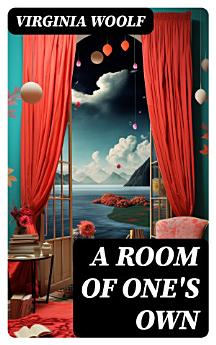A Room of One's Own
ডিসে ২০২৩ · DigiCat
ই-বুক
148
পৃষ্ঠা
family_home
উপযুক্ত
info
reportরেটিং ও রিভিউ যাচাই করা হয়নি আরও জানুন
এই ই-বুকের বিষয়ে
In her seminal essay, "A Room of One's Own," Virginia Woolf explores the essential conditions for women's literary creativity, particularly focusing on the interplay of gender and socioeconomic status in the realm of literature. Woolf's narrative weaves together personal anecdotes, literary analysis, and historical context, reflecting on the systemic barriers that have historically impeded women writers. The book's stylistic elegance showcases Woolf's stream-of-consciousness technique, offering a lyrical yet assertive call for artistic and intellectual freedom, ultimately affirming the necessity of personal and financial autonomy for women in fiction. Virginia Woolf, a pivotal figure in the modernist literary movement, deeply understood the intersection of gender and art, influenced by her own experiences and the constraints imposed on women during her time. Growing up in a household steeped in literary traditions, Woolf was acutely aware of the struggles faced by women writers, further invigorated by her involvement in the Bloomsbury Group and her extensive readings of both male and female authors. These experiences culminated in this landmark work, which serves as a manifesto advocating for women's empowerment through literature. With its profound insights and eloquent prose, "A Room of One's Own" is essential reading for anyone interested in feminist literature, the history of women's rights, or the evolution of modernism. Woolf invites readers to reflect on their own creative spaces and encourages a reconsideration of the societal norms that have shaped literary history. This book not only enriches our understanding of women's contributions to literature but also remains a clarion call for continuing the fight for equality in creative expression.
লেখক সম্পর্কে
Virginia Woolf (1882-1941) was an iconic figure of modernist literature, widely celebrated for her innovative narrative techniques and thematic depth. Born Adeline Virginia Stephen in London, Woolf explored the psychological underpinnings of her characters, pioneering the use of stream-of-consciousness as a narrative device. Her literary accomplishments are vast, though she is particularly renowned for her extended essay 'A Room of One's Own' (1929), in which she famously argued for the intellectual freedom and financial independence of women, positing, 'A woman must have money and a room of her own if she is to write fiction.' This work remains a seminal feminist text, dissecting the societal limitations imposed on women and their creativity. Woolf's oeuvre is extensive, including novels like 'Mrs. Dalloway' (1925), 'To the Lighthouse' (1927), and 'Orlando' (1928), which continue to be analyzed for their stylistic innovation and exploration of existential themes. Woolf's writing is characterized by its lyrical prose, introspective exploration of consciousness, and the haunting portrayal of the human experience. Her legacy endures, and she remains a critical figure in the study of both 20th-century literature and feminist theory.
ই-বুকে রেটিং দিন
আপনার মতামত জানান।
পঠন তথ্য
স্মার্টফোন এবং ট্যাবলেট
Android এবং iPad/iPhone এর জন্য Google Play বই অ্যাপ ইনস্টল করুন। এটি আপনার অ্যাকাউন্টের সাথে অটোমেটিক সিঙ্ক হয় ও আপনি অনলাইন বা অফলাইন যাই থাকুন না কেন আপনাকে পড়তে দেয়।
ল্যাপটপ ও কম্পিউটার
Google Play থেকে কেনা অডিওবুক আপনি কম্পিউটারের ওয়েব ব্রাউজারে শুনতে পারেন।
eReader এবং অন্যান্য ডিভাইস
Kobo eReaders-এর মতো e-ink ডিভাইসে পড়তে, আপনাকে একটি ফাইল ডাউনলোড ও আপনার ডিভাইসে ট্রান্সফার করতে হবে। ব্যবহারকারীর উদ্দেশ্যে তৈরি সহায়তা কেন্দ্রতে দেওয়া নির্দেশাবলী অনুসরণ করে যেসব eReader-এ ফাইল পড়া যাবে সেখানে ট্রান্সফার করুন।








